The Linux Kernel Key Retention Service and why you should use it in your next application


We want our digital data to be safe. We want to visit websites, send bank details, type passwords, sign documents online, login into remote computers, encrypt data before storing it in databases and be sure that nobody can tamper with it. Cryptography can provide a high degree of data security, but we need to protect cryptographic keys.
At the same time, we can’t have our key written somewhere securely and just access it occasionally. Quite the opposite, it’s involved in every request where we do crypto-operations. If a site supports TLS, then the private key is used to establish each connection.
Unfortunately cryptographic keys sometimes leak and when it happens, it is a big problem. Many leaks happen because of software bugs and security vulnerabilities. In this post we will learn how the Linux kernel can help protect cryptographic keys from a whole class of potential security vulnerabilities: memory access violations.
Memory access violations
According to the NSA, around 70% of vulnerabilities in both Microsoft's and Google's code were related to memory safety issues. One of the consequences of incorrect memory accesses is leaking security data (including cryptographic keys). Cryptographic keys are just some (mostly random) data stored in Continue reading
An early look at Thanksgiving 2022 Internet trends

"The more you practice the art of thankfulness, the more you have to be thankful for."
— Norman Vincent Peale, American author
The turkey. The sweet potatoes. The stuffing. The pumpkin pie. Yesterday, November 24, 2022, was Thanksgiving Day in the US. A time for families and loved ones to be together and thankful, according to the tradition. Last year, we saw how the US paused shopping (and browsing) for Thanksgiving. So, how was it this year? Not only did we see Internet traffic go down (by 13%) during Thanksgiving dinner, but it was much higher than usual the day before and the day after (the Black Friday effect… so far). There was also a clear, but short, Thanksgiving day effect on e-commerce DNS trends.
We'll have to wait to see what Black Friday looks like.
Let’s start with Internet traffic at the time of Thanksgiving dinner. Although every family is different, a 2018 survey of US consumers showed that for 42% early afternoon (between 13:00 and 15:00 is the preferred time to sit at the table and start to dig in). But 16:00 seems to be the “correct time” — The Atlantic explains why.
That said, Cloudflare Continue reading
Cloudflare servers don’t own IPs anymore – so how do they connect to the Internet?


A lot of Cloudflare's technology is well documented. For example, how we handle traffic between the eyeballs (clients) and our servers has been discussed many times on this blog: “A brief primer on anycast (2011)”, "Load Balancing without Load Balancers (2013)", "Path MTU discovery in practice (2015)", "Cloudflare's edge load balancer (2020)", "How we fixed the BSD socket API (2022)".
However, we have rarely talked about the second part of our networking setup — how our servers fetch the content from the Internet. In this blog we’re going to cover this gap. We'll discuss how we manage Cloudflare IP addresses used to retrieve the data from the Internet, how our egress network design has evolved and how we optimized it for best use of available IP space.
Brace yourself. We have a lot to cover.
Terminology first!

Each Cloudflare server deals with many kinds of networking traffic, but two rough categories stand out:
- Internet sourced traffic - Inbound connections initiated by eyeball to our servers. In the context of this blog post we'll call these "ingress connections".
- Cloudflare sourced traffic - Outgoing connections initiated by our servers to other Continue reading
Why BGP communities are better than AS-path prepends


The Internet, in its purest form, is a loosely connected graph of independent networks (also called Autonomous Systems (AS for short)). These networks use a signaling protocol called BGP (Border Gateway Protocol) to inform their neighbors (also known as peers) about the reachability of IP prefixes (a group of IP addresses) in and through their network. Part of this exchange contains useful metadata about the IP prefix that are used to inform network routing decisions. One example of the metadata is the full AS-path, which consists of the different autonomous systems an IP packet needs to pass through to reach its destination.
As we all want our packets to get to their destination as fast as possible, selecting the shortest AS-path for a given prefix is a good idea. This is where something called prepending comes into play.
Routing on the Internet, a primer
Let's briefly talk about how the Internet works at its most fundamental level, before we dive into some nitty-gritty details.
The Internet is, at its core, a massively interconnected network of thousands of networks. Each network owns two things that are critical:
1. An Autonomous System Number (ASN): a 32-bit integer that uniquely identifies a network. Continue reading
How we detect route leaks and our new Cloudflare Radar route leak service


Today we’re introducing Cloudflare Radar’s route leak data and API so that anyone can get information about route leaks across the Internet. We’ve built a comprehensive system that takes in data from public sources and Cloudflare’s view of the Internet drawn from our massive global network. The system is now feeding route leak data on Cloudflare Radar’s ASN pages and via the API.
This blog post is in two parts. There’s a discussion of BGP and route leaks followed by details of our route leak detection system and how it feeds Cloudflare Radar.
About BGP and route leaks
Inter-domain routing, i.e., exchanging reachability information among networks, is critical to the wellness and performance of the Internet. The Border Gateway Protocol (BGP) is the de facto routing protocol that exchanges routing information among organizations and networks. At its core, BGP assumes the information being exchanged is genuine and trust-worthy, which unfortunately is no longer a valid assumption on the current Internet. In many cases, networks can make mistakes or intentionally lie about the reachability information and propagate that to the rest of the Internet. Such incidents can cause significant disruptions of the normal operations of the Internet. One type Continue reading
Why Cloudflare’s one of the Top 100 Most Loved Workplaces in 2022

This post is also available in Français, 日本語, 简体中文, 한국어, Español.

At Cloudflare, we have strived to build a workplace where our entire team feels safe and excited to bring their whole selves to work, so they can do their best work. That’s why we are proud to share that Cloudflare has been named one of the Top 100 Most Loved Workplaces in 2022 by Newsweek and Best Practice Institute (BPI). Most Loved Workplaces recognizes companies where their workers love, and feel in sync with, the company they work for.
With this, and as we’re approaching the end-of 2022, we thought this was a good time to reflect on some of the things that go into being one of these Most Loved Workplaces and just some of what makes up our workplace and culture.

Something that really grounds our entire team is Cloudflare’s mission: to help build a better Internet. When you are solving some of the toughest challenges facing the Internet — helping make the Internet secure, fast, private, and reliable globally — you need a range of talented individuals to do this. The people at Cloudflare are exactly that, and are essential to our Continue reading
ICYMI: Developer Week 2022 announcements


Developer Week 2022 has come to a close. Over the last week we’ve shared with you 31 posts on what you can build on Cloudflare and our vision and roadmap on where we’re headed. We shared product announcements, customer and partner stories, and provided technical deep dives. In case you missed any of the posts here’s a handy recap.
Product and feature announcements
| Announcement | Summary |
|---|---|
| Welcome to the Supercloud (and Developer Week 2022) | Our vision of the cloud -- a model of cloud computing that promises to make developers highly productive at scaling from one to Internet-scale in the most flexible, efficient, and economical way. |
| Build applications of any size on Cloudflare with the Queues open beta | Build performant and resilient distributed applications with Queues. Available to all developers with a paid Workers plan. |
| Migrate from S3 easily with the R2 Super Slurper | A tool to easily and efficiently move objects from your existing storage provider to R2. |
| Get started with Cloudflare Workers with ready-made templates | See what’s possible with Workers and get building faster with these starter templates. |
| Reduce origin load, save on cloud egress fees, and maximize cache hits with Cache Reserve | Cache Reserve is graduating to open Continue reading |
Send Cloudflare Workers logs to a destination of your choice with Workers Trace Events Logpush

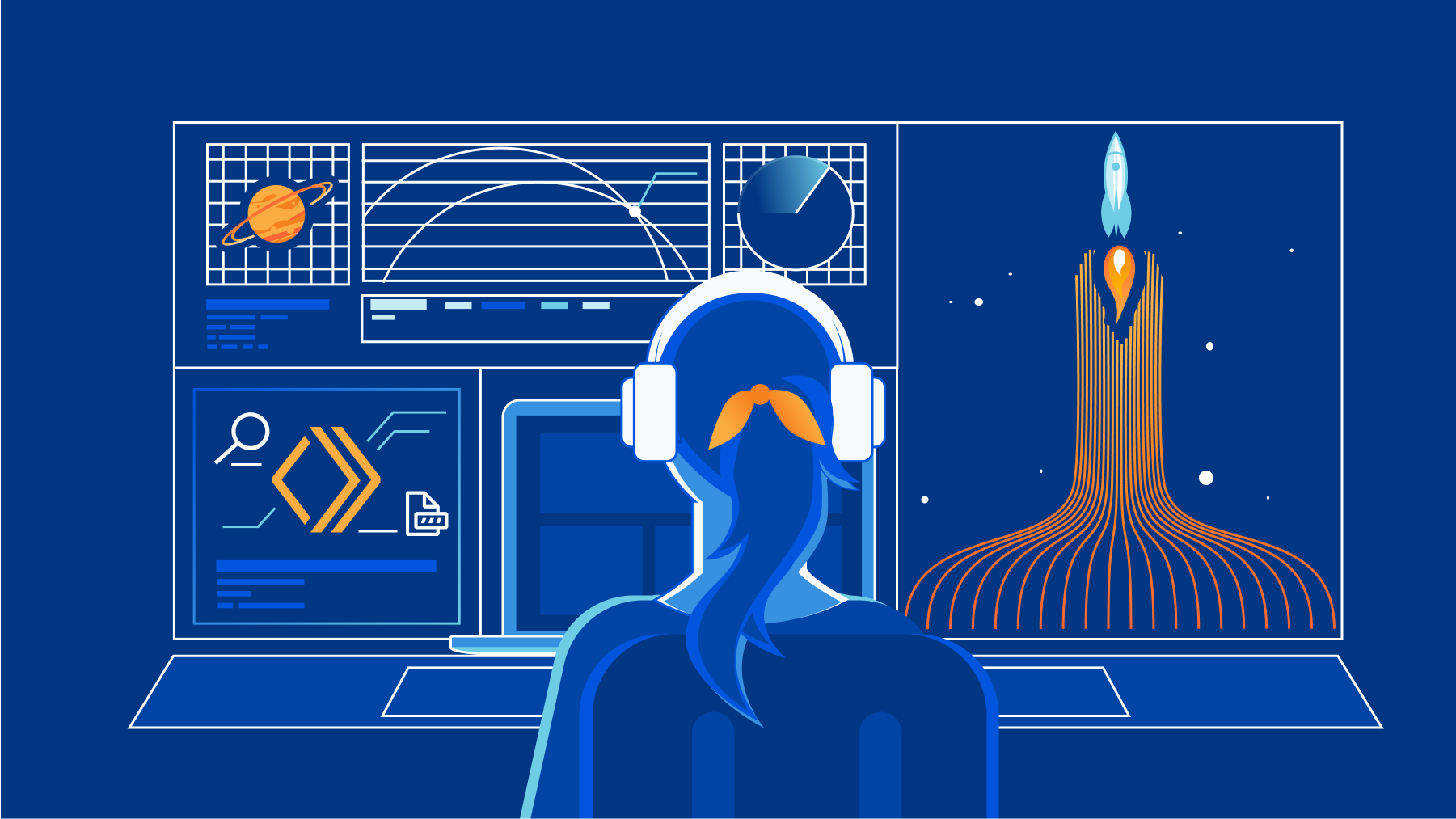
When writing code, you can only move as fast as you can debug.
Our goal at Cloudflare is to give our developers the tools to deploy applications faster than ever before. This means giving you tools to do everything from initializing your Workers project to having visibility into your application successfully serving production traffic.
Last year we introduced wrangler tail, letting you access a live stream of Workers logs to help pinpoint errors to debug your applications. Workers Trace Events Logpush (or just Workers Logpush for short) extends this functionality – you can use it to send Workers logs to an object storage destination or analytics platform of your choice.
Workers Logpush is now available to everyone on the Workers Paid plan! Read on to learn how to get started and about pricing information.
Move fast and don’t break things
With the rise of platforms like Cloudflare Workers over containers and VMs, it now takes just minutes to deploy applications. But, when building an application, any tech stack that you choose comes with its own set of trade-offs.
As a developer, choosing Workers means you don't need to worry about any of the underlying architecture. You just write code, Continue reading
How Cloudflare instruments services using Workers Analytics Engine
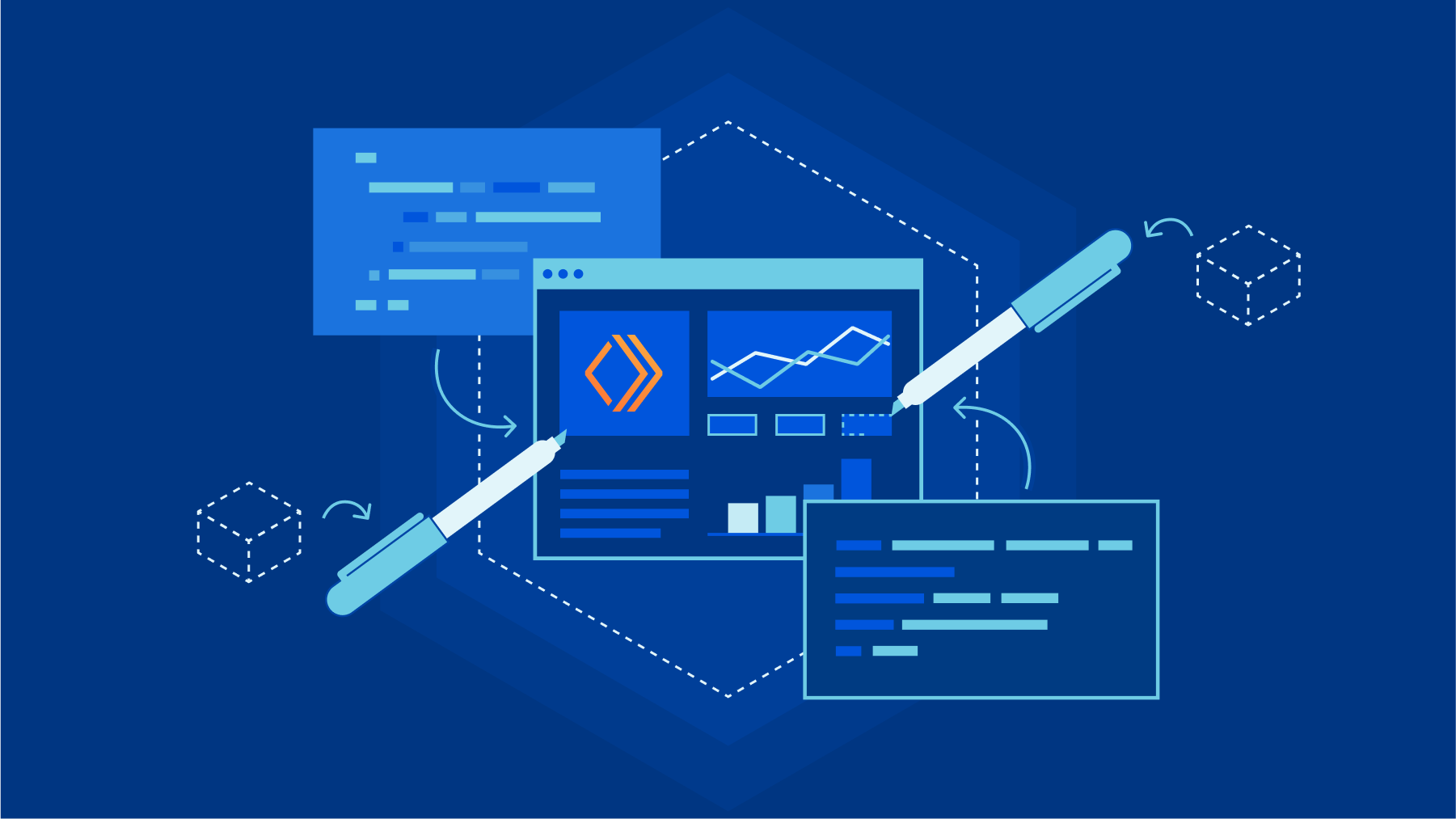

Workers Analytics Engine is a new tool, announced earlier this year, that enables developers and product teams to build time series analytics about anything, with high dimensionality, high cardinality, and effortless scaling. We built Analytics Engine for teams to gain insights into their code running in Workers, provide analytics to end customers, or even build usage based billing.
In this blog post we’re going to tell you about how we use Analytics Engine to build Analytics Engine. We’ve instrumented our own Analytics Engine SQL API using Analytics Engine itself and use this data to find bugs and prioritize new product features. We hope this serves as inspiration for other teams who are looking for ways to instrument their own products and gather feedback.
Why do we need Analytics Engine?
Analytics Engine enables you to generate events (or “data points”) from Workers with just a few lines of code. Using the GraphQL or SQL API, you can query these events and create useful insights about the business or technology stack. For more about how to get started using Analytics Engine, check out our developer docs.
Since we released the Analytics Engine open beta in September, we’ve been adding new Continue reading
Doubling down on local development with Workers: Miniflare meets workerd

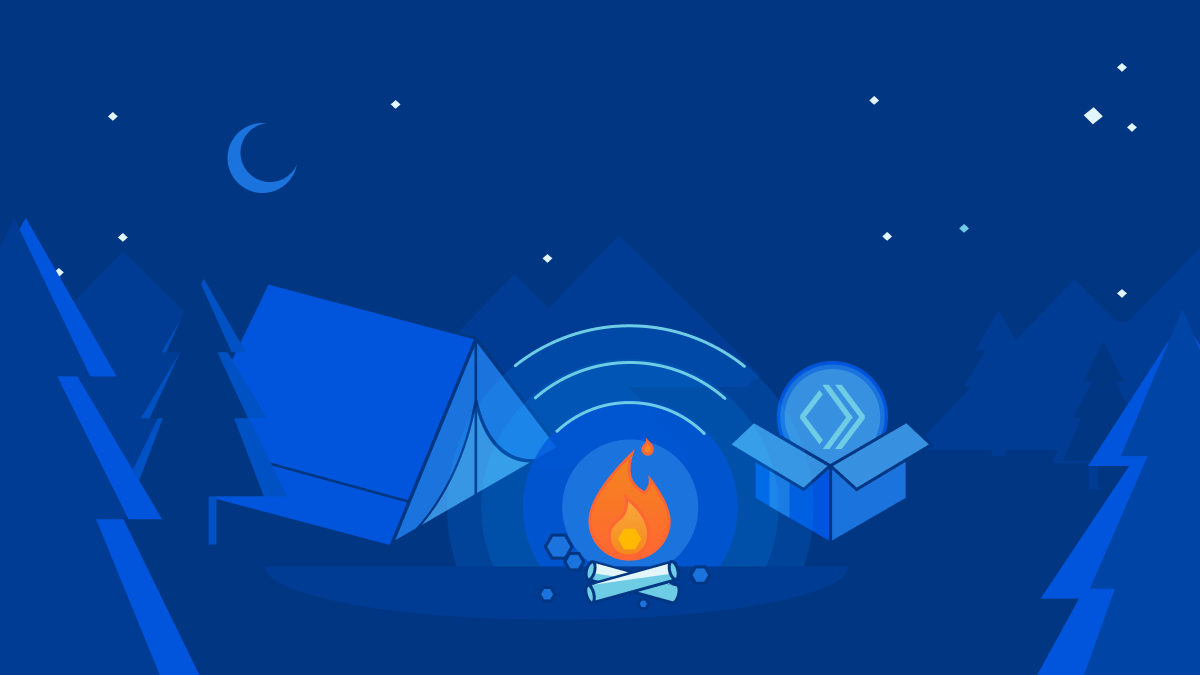
Local development gives you a fully-controllable and easy-to-debug testing environment. At the start of this year, we brought this experience to Workers developers by launching Miniflare 2.0: a local Cloudflare Workers simulator. Miniflare 2 came with features like step-through debugging support, detailed console.logs, pretty source-mapped error pages, live reload and a highly-configurable unit testing environment. Not only that, but we also incorporated Miniflare into Wrangler, our Workers CLI, to enable wrangler dev’s --local mode.
Today, we’re taking local development to the next level! In addition to introducing new support for migrating existing projects to your local development environment, we're making it easier to work with your remote data—locally! Most importantly, we're releasing a much more accurate Miniflare 3, powered by the recently open-sourced workerd runtime—the same runtime used by Cloudflare Workers!
Enabling local development with workerd
One of the superpowers of having a local development environment is that you can test changes without affecting users in production. A great local environment offers a level of fidelity on par with production.
The way we originally approached local development was with Miniflare 2, which reimplemented Workers runtime APIs in JavaScript. Unfortunately, there were subtle behavior Continue reading
Improving Workers TypeScript support: accuracy, ergonomics and interoperability
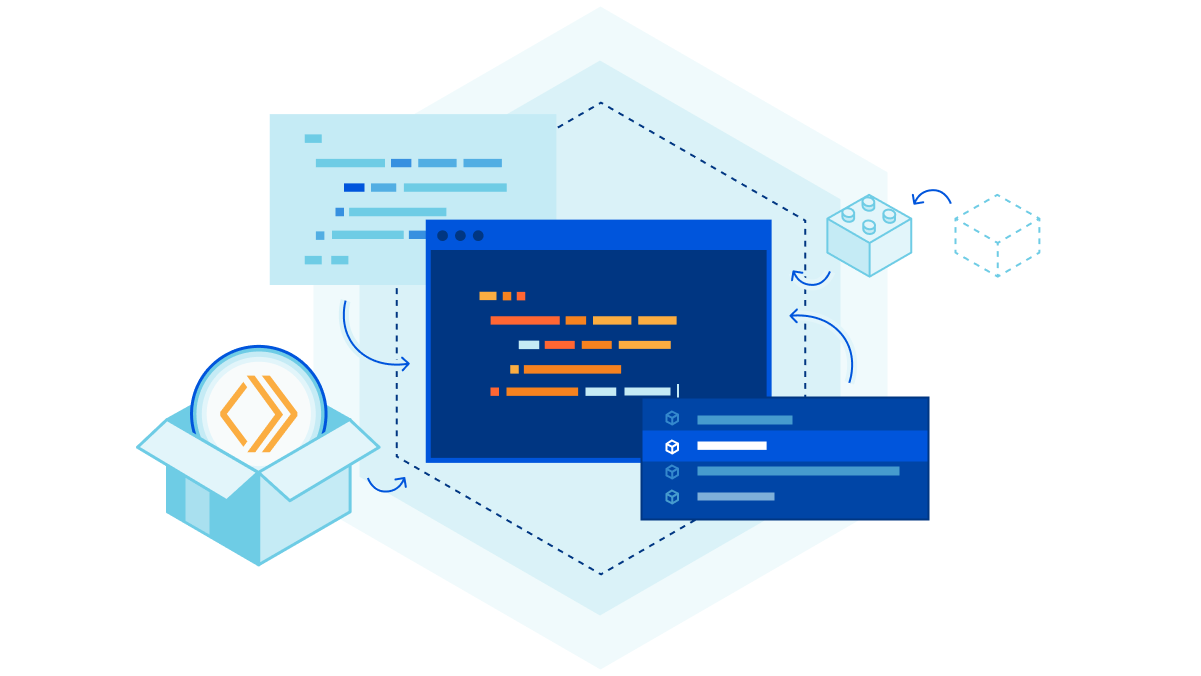
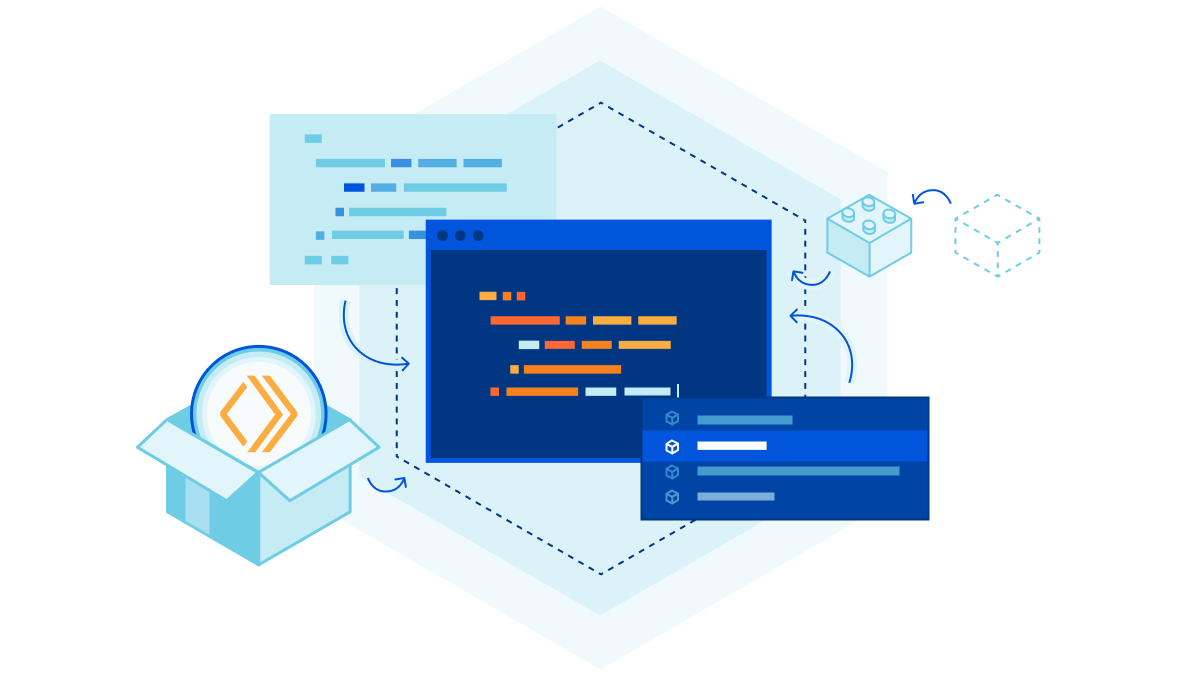
TypeScript makes it easy for developers to write code that doesn’t crash, by catching type errors before your program runs. We want developers to take advantage of this tooling, which is why one year ago, we built a system to automatically generate TypeScript types for the Cloudflare Workers runtime. This enabled developers to see code completions in their IDEs for Workers APIs, and to type check code before deploying. Each week, a new version of the types would be published, reflecting the most recent changes.
Over the past year, we’ve received lots of feedback from customers and internal teams on how we could improve our types. With the switch to the Bazel build system in preparation for open-sourcing the runtime, we saw an opportunity to rebuild our types to be more accurate, easier to use, and simpler to generate. Today, we’re excited to announce the next major release of @cloudflare/workers-types with a bunch of new features, and the open-sourcing of the fully-rewritten automatic generation scripts.
How to use TypeScript with Workers
Setting up TypeScript in Workers is easy! If you’re just getting started with Workers, install Node.js, then run npx wrangler init in your terminal to Continue reading
Network performance update: Developer Week 2022
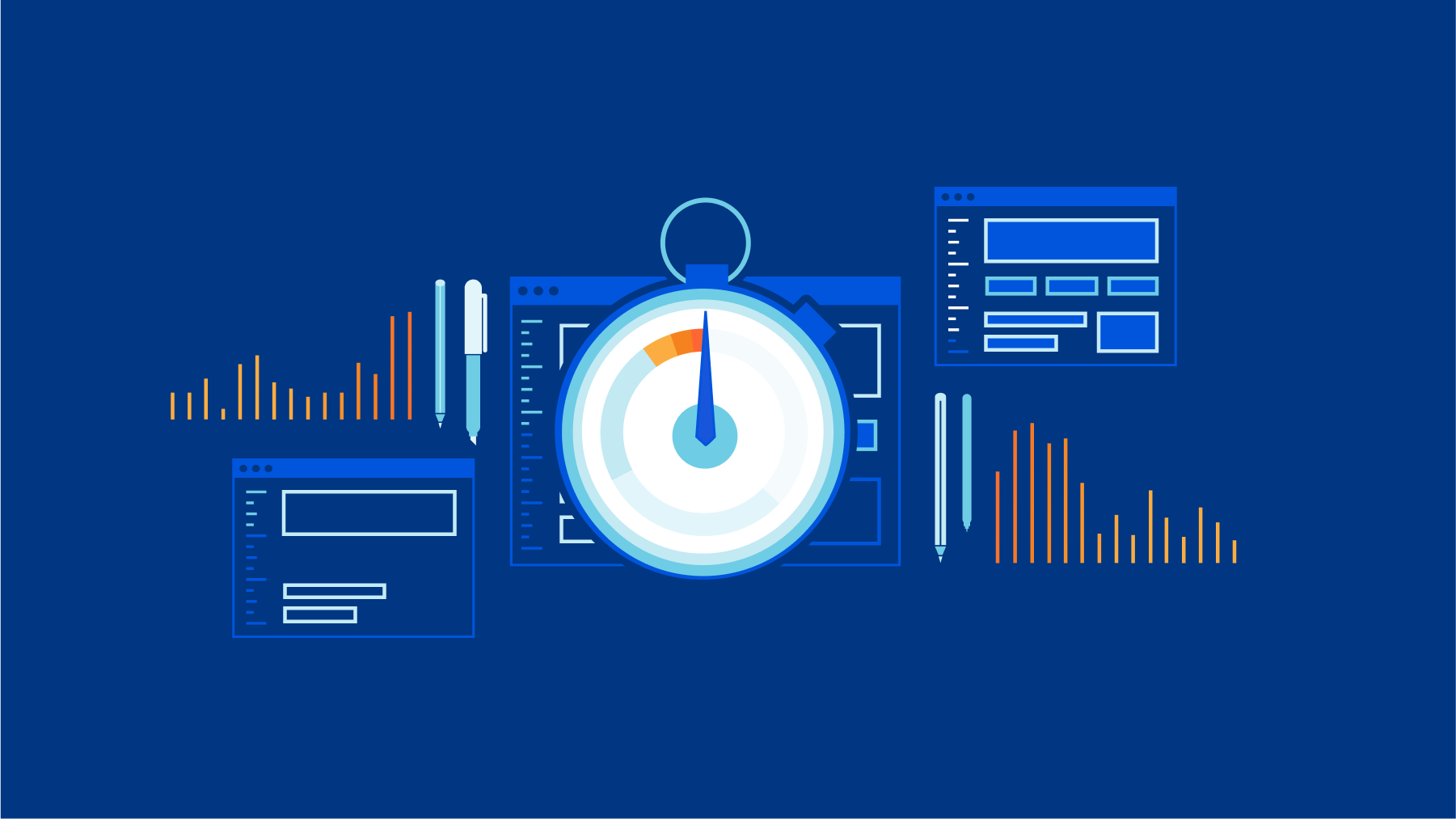
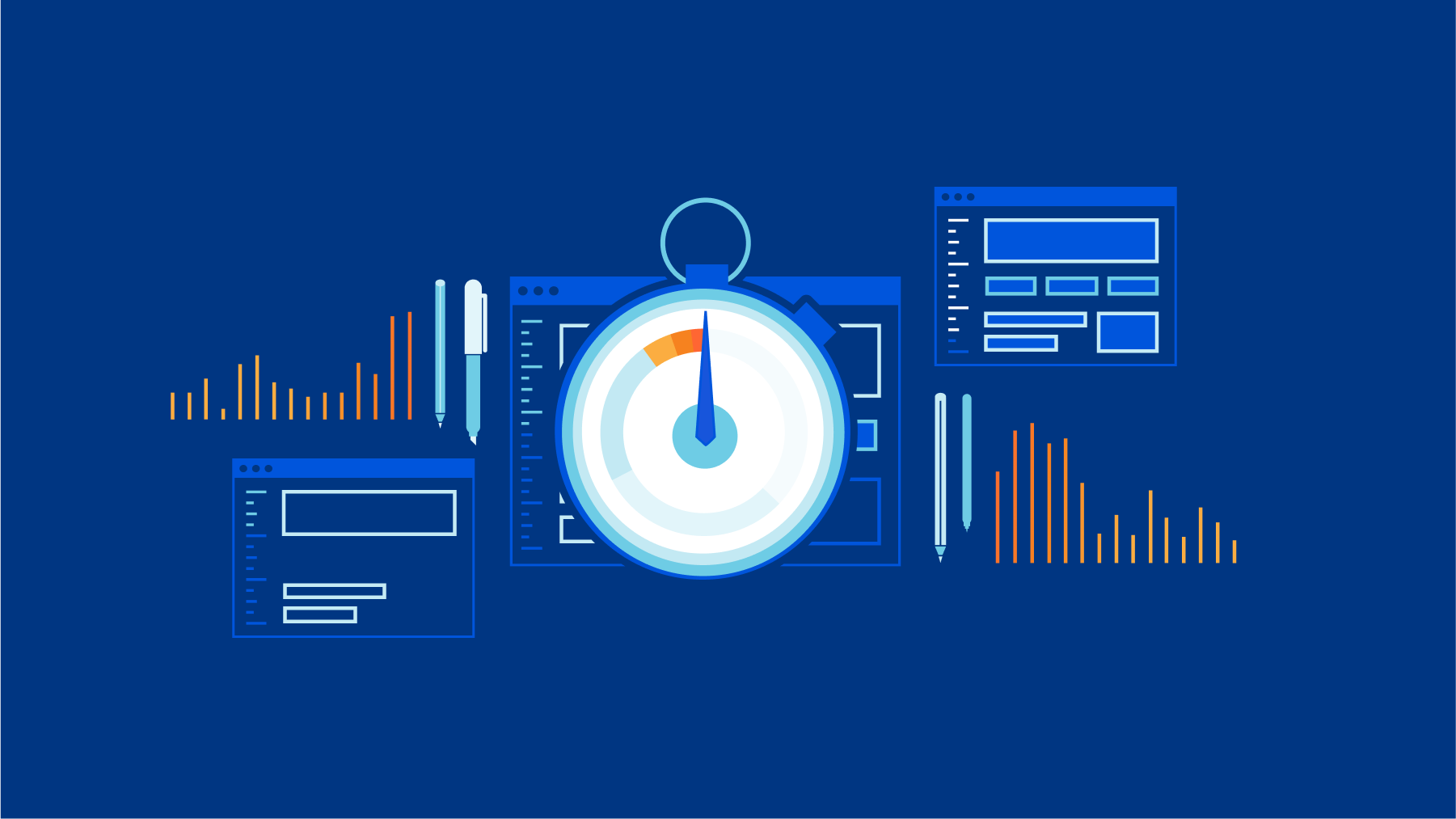
Cloudflare is building the fastest network in the world. But we don’t want you to just take our word for it. To demonstrate it, we are continuously testing ourselves versus everyone else to make sure we’re the fastest. Since it’s Developer Week, we wanted to provide an update on how our Workers products perform against the competition, as well as our overall network performance.
Earlier this year, we compared ourselves to Fastly’s Compute@Edge and overall we were faster. This time, not only did we repeat the tests, but we also added AWS Lambda@Edge to help show how we stack up against more and more competitors. The summary: we offer the fastest developer platform on the market. Let’s talk about how we build our network to help make you faster, and then we’ll get into how that translates to our developer platform.
Latest update on network performance
We have two updates on data: a general network performance update, and then data on how Workers compares with Compute@Edge and Lambda@Edge.
To quantify global network performance, we have to get enough data from around the world, across all manner of different networks, comparing ourselves with other providers. We used Real User Measurements (RUM) Continue reading
Twilio Segment Edge SDK powered by Cloudflare Workers

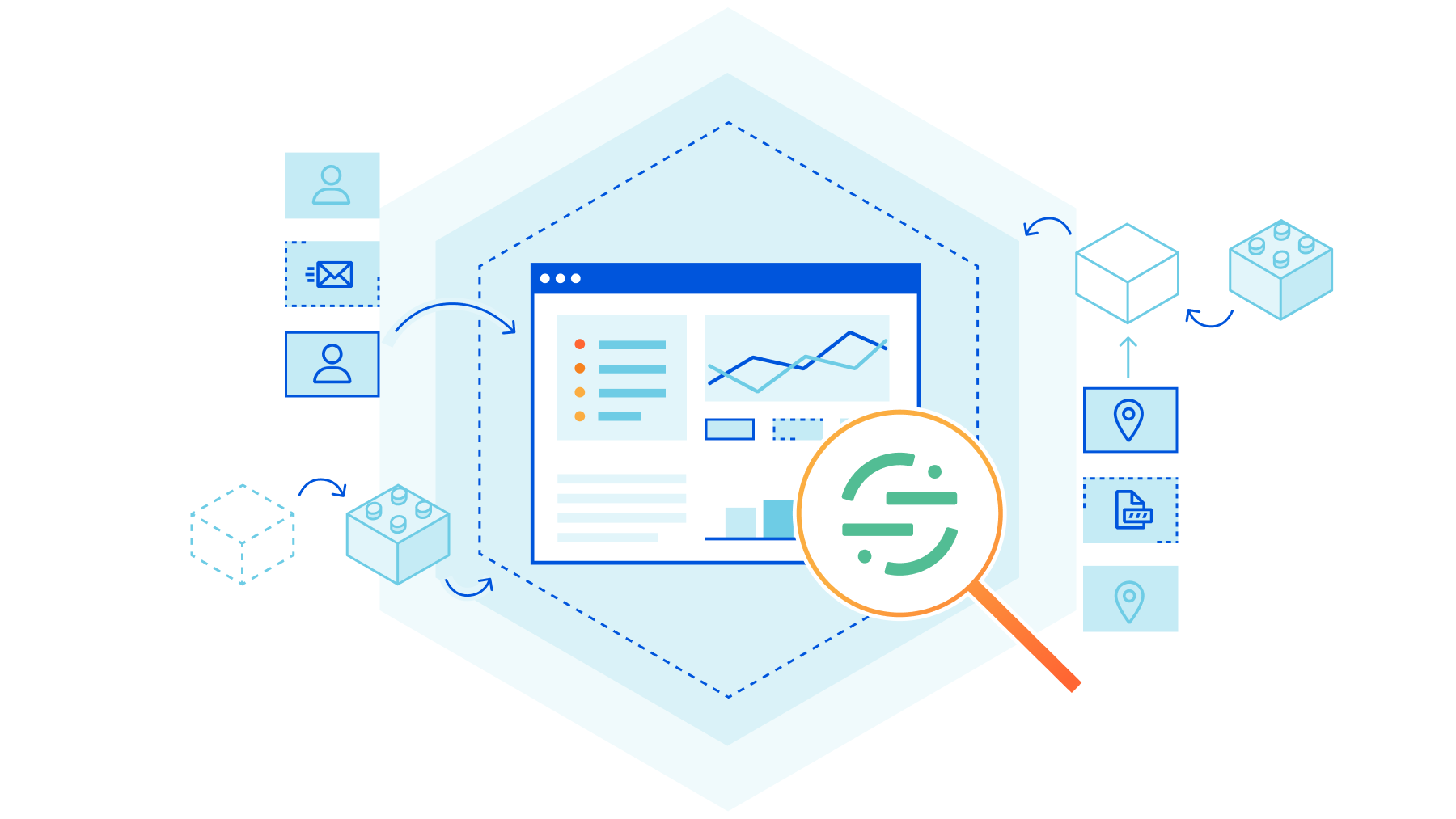
The Cloudflare team was so excited to hear how Twilio Segment solved problems they encountered with tracking first-party data and personalization using Cloudflare Workers. We are happy to have guest bloggers Pooya Jaferian and Tasha Alfano from Twilio Segment to share their story.
Introduction
Twilio Segment is a customer data platform that collects, transforms, and activates first-party customer data. Segment helps developers collect user interactions within an application, form a unified customer record, and sync it to hundreds of different marketing, product, analytics, and data warehouse integrations.
There are two “unsolved” problem with app instrumentation today:
Problem #1: Many important events that you want to track happen on the “wild-west” of the client, but collecting those events via the client can lead to low data quality, as events are dropped due to user configurations, browser limitations, and network connectivity issues.
Problem #2: Applications need access to real-time (<50ms) user state to personalize the application experience based on advanced computations and segmentation logic that must be executed on the cloud.
The Segment Edge SDK – built on Cloudflare Workers – solves for both. With Segment Edge SDK, developers can collect high-quality first-party data. Developers can also use Segment Edge SDK to Continue reading
Spice up your sites on Cloudflare Pages with Pages Functions General Availability
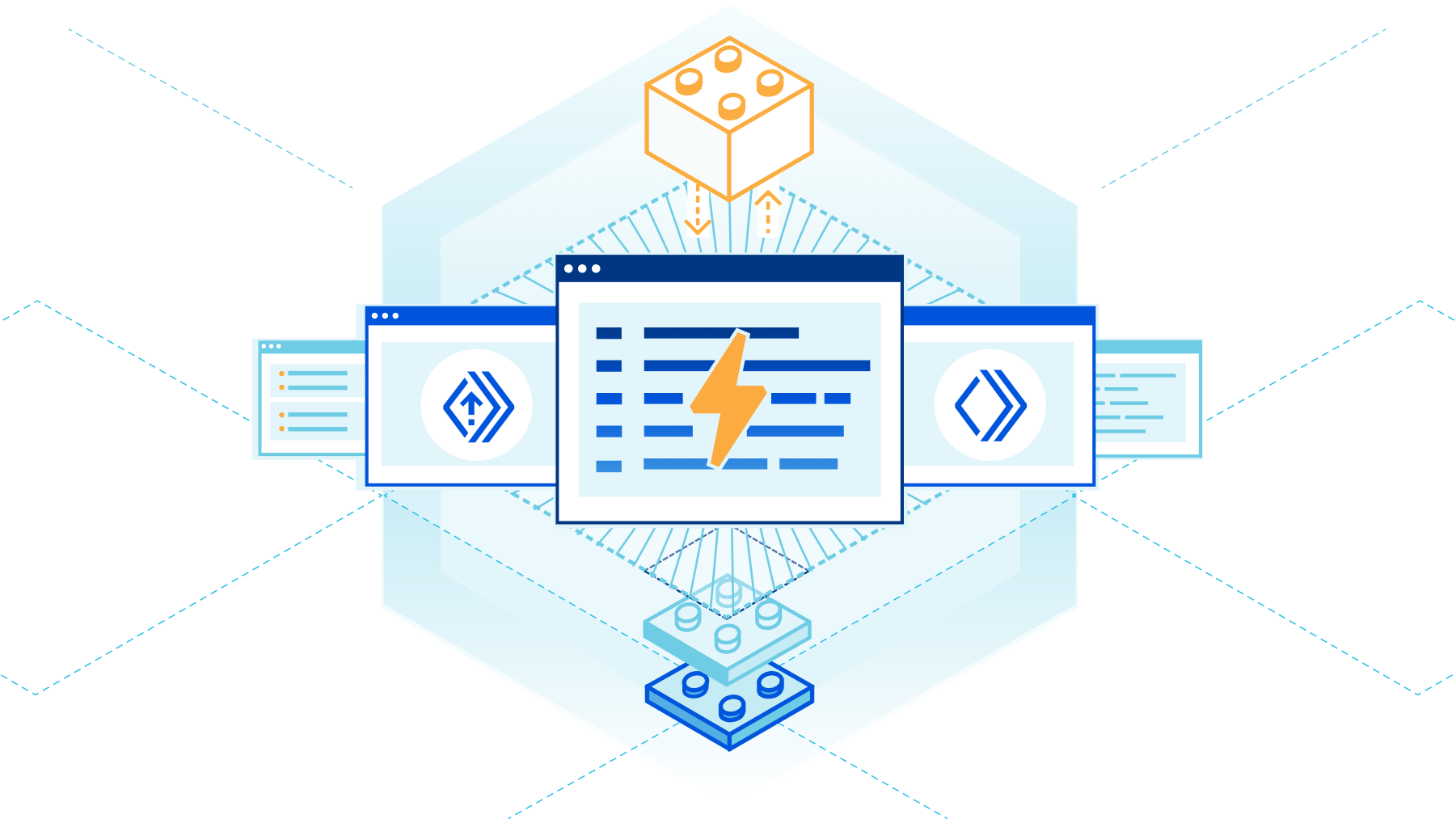
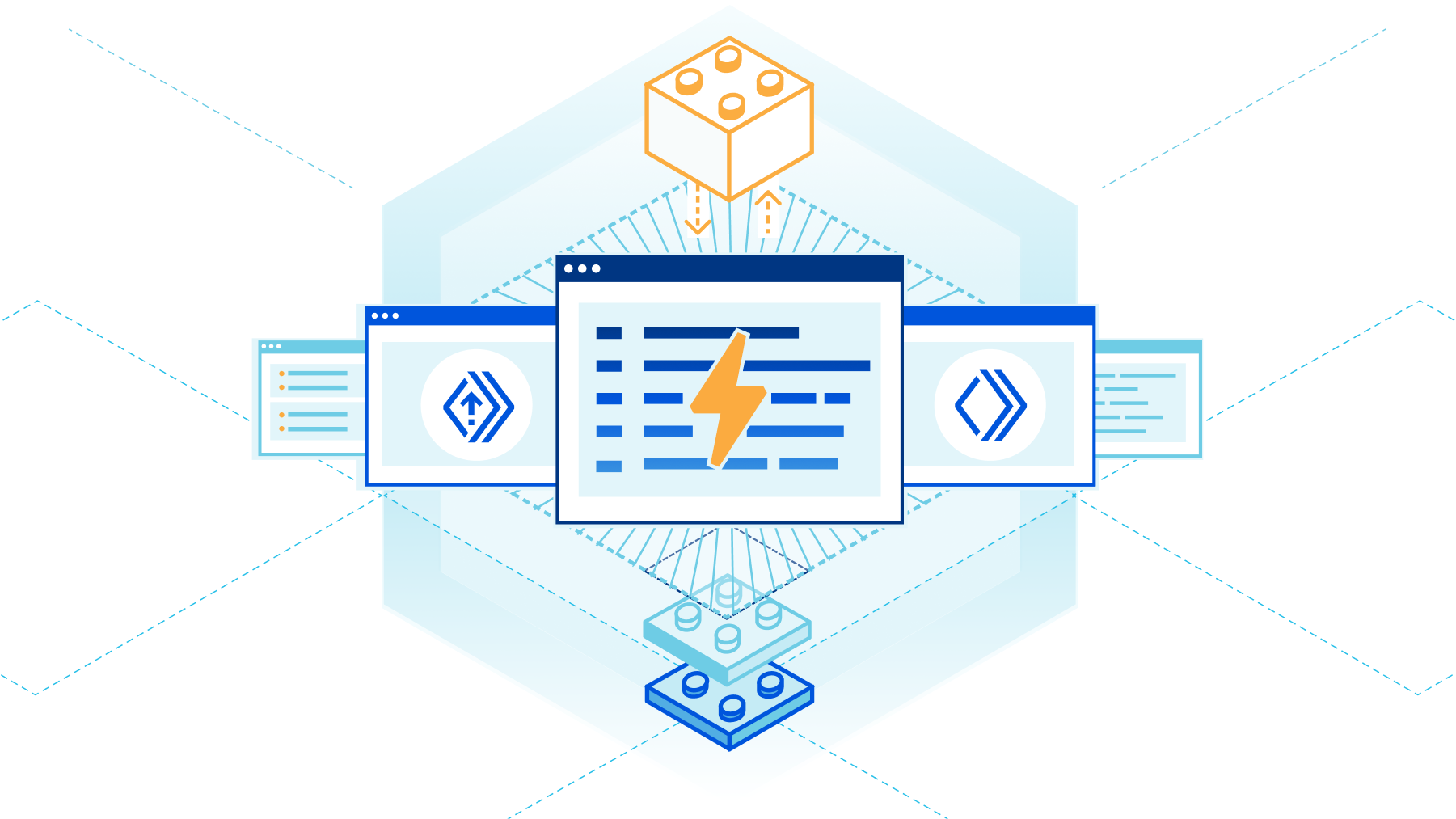
Before we launched Pages back in April 2021, we knew it would be the start of something magical – an experience that felt “just right”. We envisioned an experience so simple yet so smooth that any developer could ship a website in seconds and add more to it by using the rest of our Cloudflare ecosystem.
A few months later, when we announced that Pages was a full stack platform in November 2021, that vision became a reality. Creating a development platform for just static sites was not the end of our Pages story, and with Cloudflare Workers already a part of our ecosystem, we knew we were sitting on untapped potential. With the introduction of Pages Functions, we empowered developers to take any static site and easily add in dynamic content with the power of Cloudflare Workers.
In the last year since Functions has been in open beta, we dove into an exploration on what kinds of full stack capabilities developers are looking for on their projects – and set out to fine tune the Functions experience into what it is today.
We’re thrilled to announce that Pages Functions is now generally available!
Functions recap
Though called “Functions” in Continue reading
Keep track of Workers’ code and configuration changes with Deployments
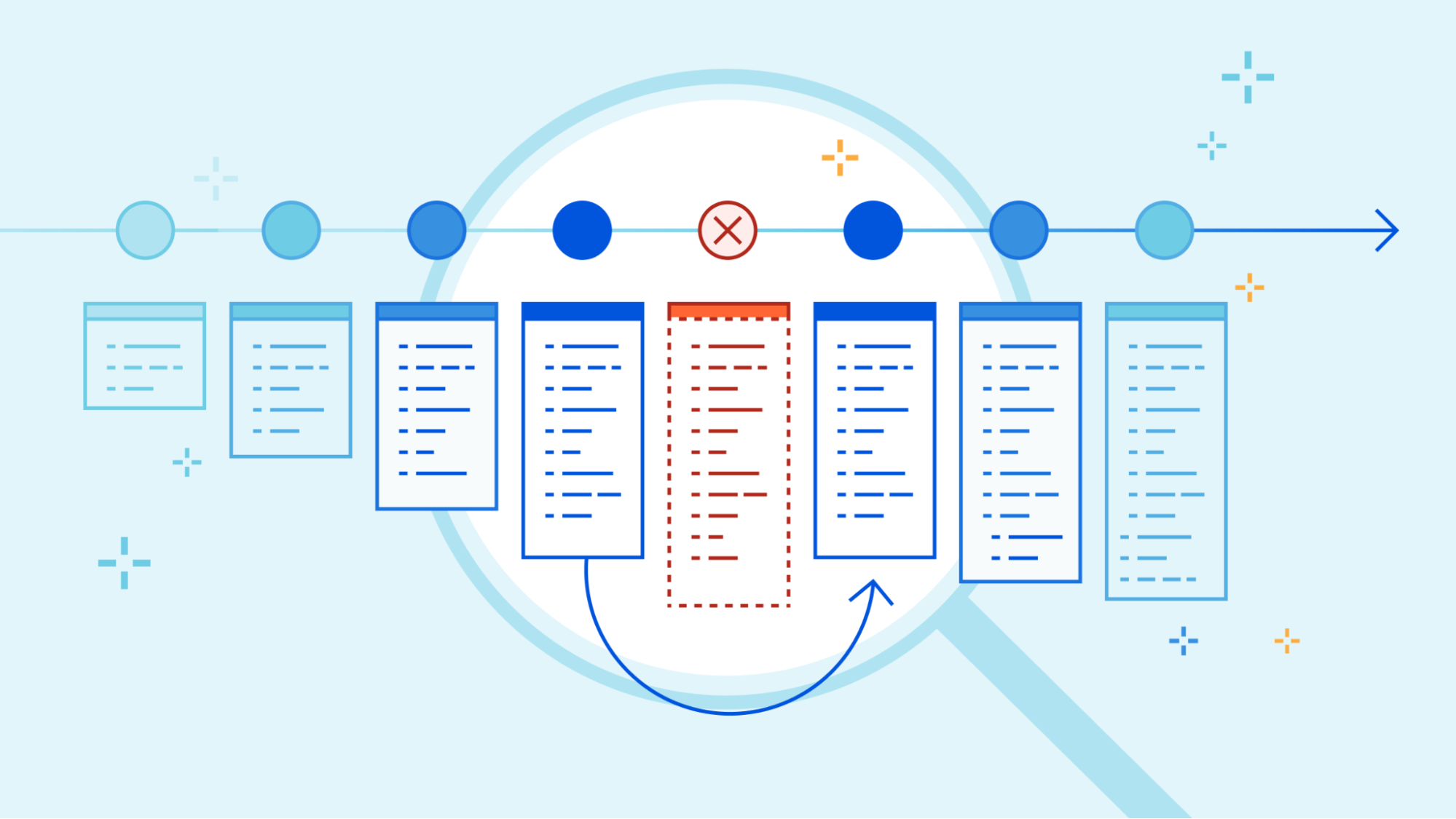
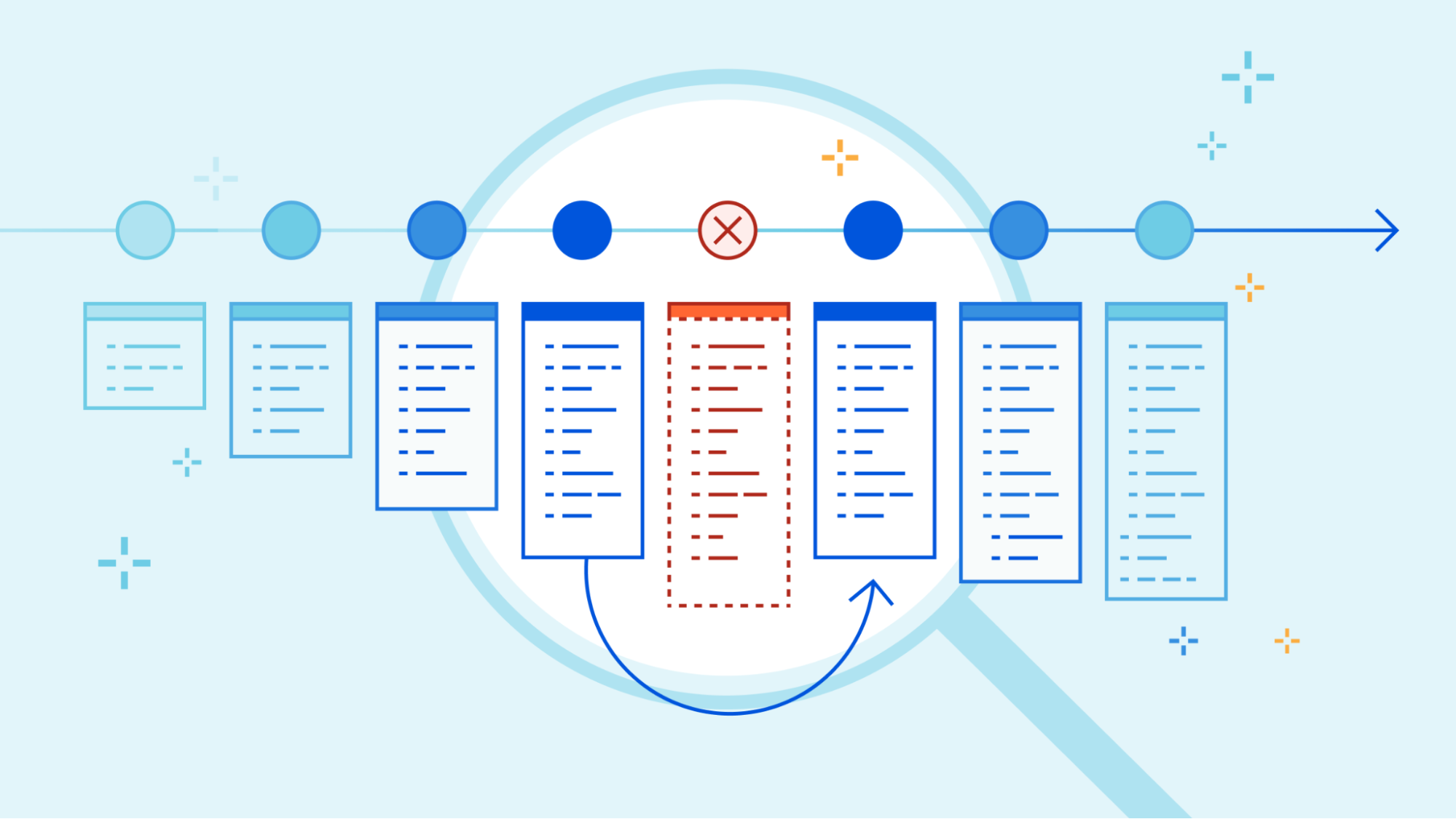
Today we’re happy to introduce Deployments for Workers. Deployments allow developers to keep track of changes to their Worker; not just the code, but the configuration and bindings as well. With deployments, developers now have access to a powerful audit log of changes to their production applications.
And tracking changes is just the beginning! Deployments provide a strong foundation to add: automated deployments, rollbacks, and integration with version control.
Today we’ll dive into the details of deployments, how you can use them, and what we’re thinking about next.
Deployments
Deployments are a powerful new way to track changes to your Workers. With them, you can track who’s making changes to your Workers, where those changes are coming from, and when those changes are being made.
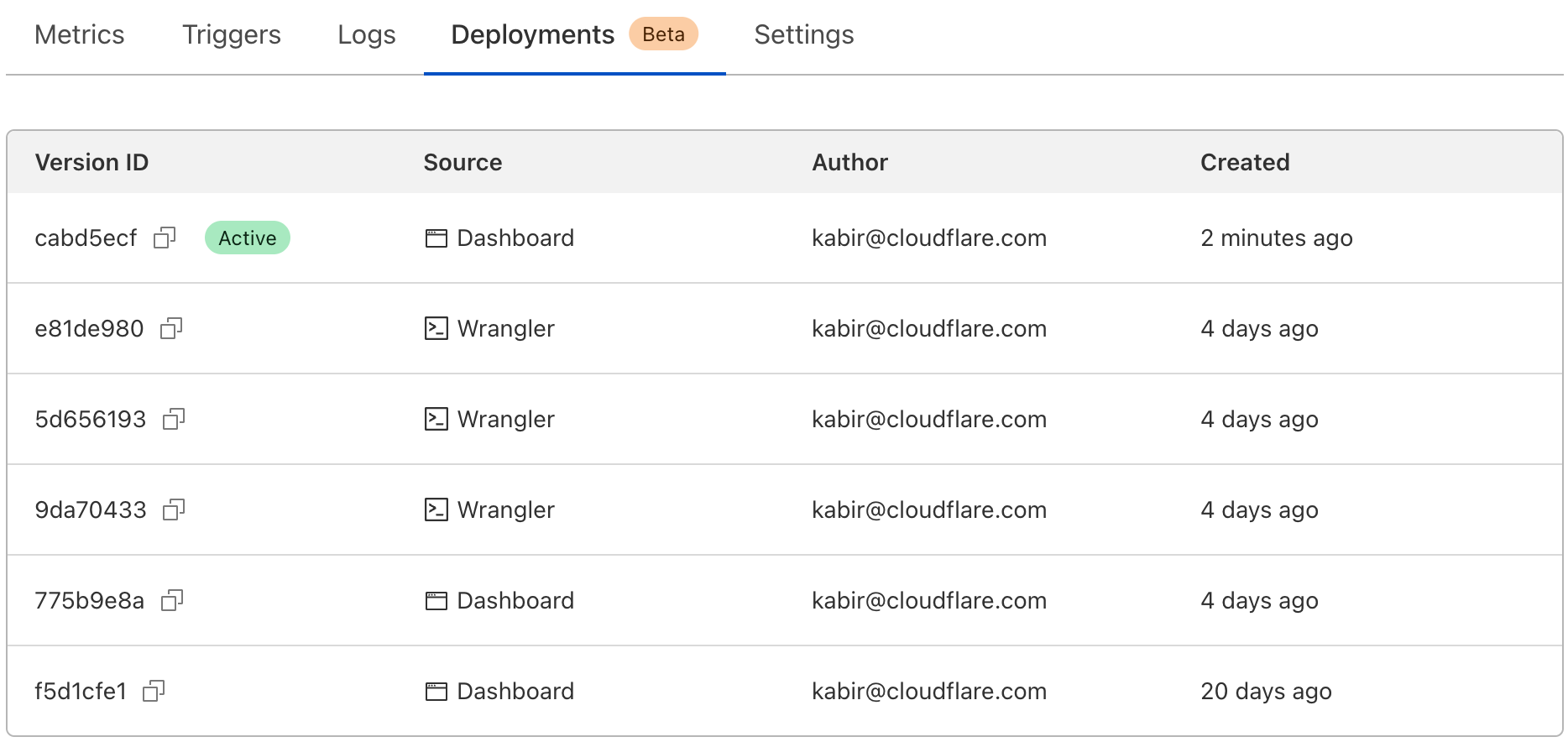
Cloudflare reports on deployments made from wrangler, API, dashboard, or Terraform anytime you make changes to your Worker’s code, edit resource bindings and environment variables, or modify configuration like name or usage model.

We expose the source of your deployments, so you can track where changes are coming from. For example, if you have a CI job that’s responsible for changes, and you see a user made a change through the Cloudflare dashboard, it’s easy Continue reading
The most programmable Supercloud with Cloudflare Snippets
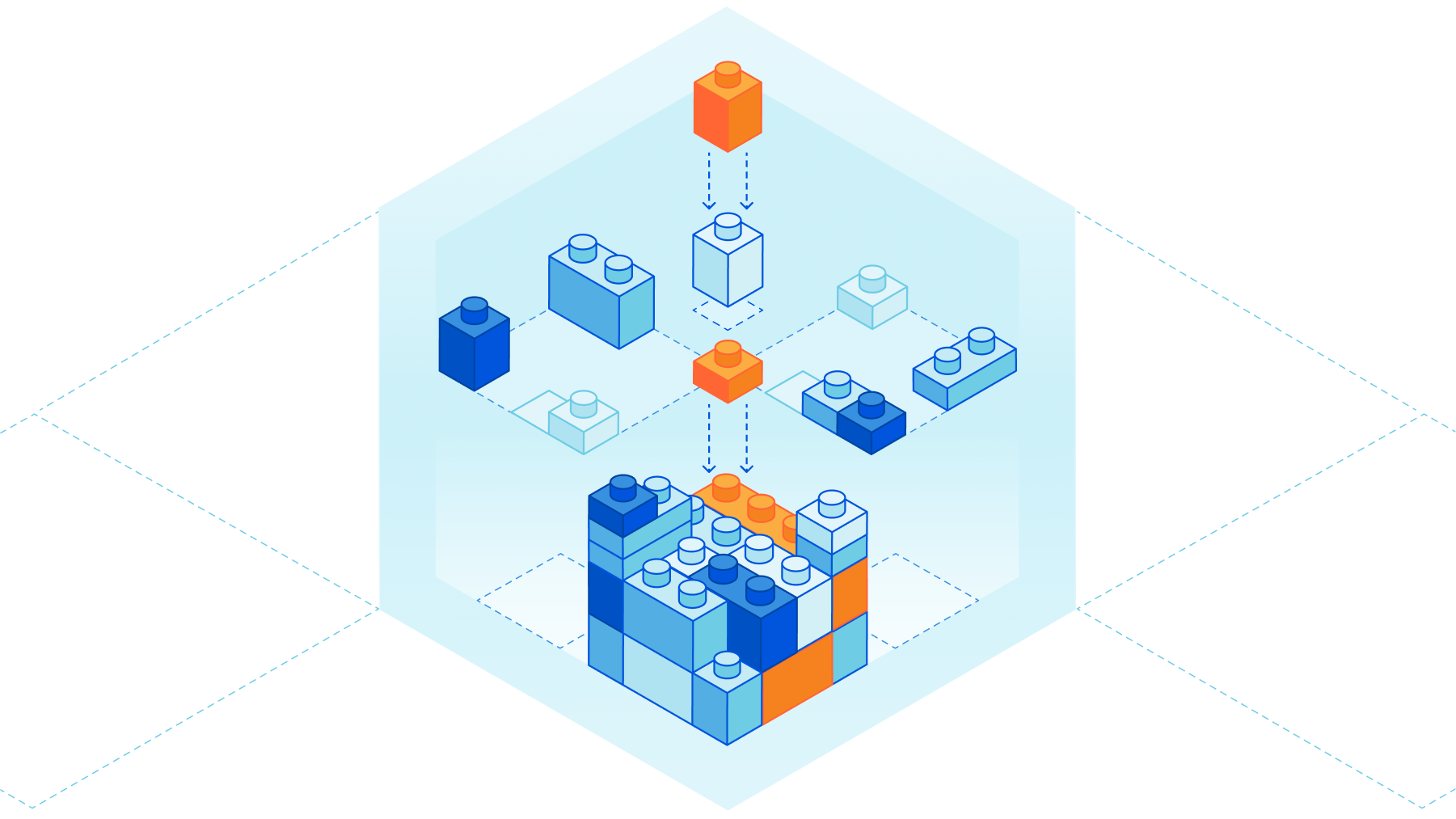
Your traffic, how you like it

Cloudflare is used by a highly diverse customer base. We offer simple-to-use products for everything from setting HTTP headers to rewriting the URI path and performing URL redirects. Sometimes customers need more than the out-of-the-box functionality, not just adding an HTTP header - but performing some advanced calculation to create the output. Today they would need to create a feature request and wait for it to be shipped, write a Cloudflare Worker, or keep this modification ‘on origin’ - on their own infrastructure.
To simplify this, we are delighted to announce Cloudflare Snippets. Snippets are a new way to perform traffic modifications that users either cannot do via our productised offerings, or want to do programmatically. The best part? The vast majority of customers will pay nothing extra for using Snippets.
Users now have a choice. Perform the action via a rule. Or, if more functionality is needed, write a Snippet. Neither will mean waiting. Neither will incur additional cost (although a high fair usage cap will apply). Snippets unblocks users to do what they want, when they want. All on Cloudflare.
Snippets will support the import of code written in various languages, Continue reading
How Cloudflare uses Terraform to manage Cloudflare


Configuration management is far from a solved problem. As organizations scale beyond a handful of administrators, having a secure, auditable, and self-service way of updating system settings becomes invaluable. Managing a Cloudflare account is no different. With dozens of products and hundreds of API endpoints, keeping track of current configuration and making bulk updates across multiple zones can be a challenge. While the Cloudflare Dashboard is great for analytics and feature exploration, any changes that could potentially impact users really should get a code review before being applied!
This is where Cloudflare's Terraform provider can come in handy. Built as a layer on top of the cloudflare-go library, the provider allows users to interface with the Cloudflare API using stateful Terraform resource declarations. Not only do we actively support this provider for customers, we make extensive use of it internally! In this post, we hope to provide some best practices we've learned about managing complex Cloudflare configurations in Terraform.
Why Terraform
Unsurprisingly, we find Cloudflare's products to be pretty useful for securing and enhancing the performance of services we deploy internally. We use DNS, WAF, Zero Trust, Email Security, Workers, and all manner of Continue reading
Server-side render full stack applications with Pages Functions


Pages Functions are now out of beta and generally available, bringing dynamic computation within 50ms of 95% of users globally. Built on top of Cloudflare Workers, Pages projects are easy to deploy and instantly benefit from this low latency, with over 275 data centers across the globe.
With Page Functions comes the ability to add dynamic server-side rendering to your applications. Pages makes it easy to deploy applications built using all the major meta-frameworks such as Astro, Next.js, Qwik, Remix, Solid, and Svelte. There is no better time to start deploying your server-side rendered full-stack applications to Cloudflare Pages.
Go server-side with Pages Functions
When Pages launched in December 2020, it was focused on being a high-performance host for static assets. Pages was a perfect choice for anyone building websites which could be generated ahead of time with static site generation. Jamstack was all the rage, and Cloudflare's network was an excellent choice for its ability to serve static files to visitors from around the globe.
Once deployed the files would be effortlessly hosted and served at incredible speeds across the world to your users. These statically generated applications can run client-side code in the browser to Continue reading
How we built it: the technology behind Cloudflare Radar 2.0


Radar 2.0 was built on the learnings of Radar 1.0 and was launched last month during Cloudflare's Birthday Week as a complete product revamp. We wanted to make it easier for our users to find insights and navigate our data, and overall provide a better and faster user experience.

We're building a Supercloud. Cloudflare's products now include hundreds of features in networking, security, access controls, computing, storage, and more.
This blog will explain how we built the new Radar from an engineering perspective. We wanted to do this to demonstrate that anyone could build a somewhat complex website that involves demanding requirements and multiple architectural layers, do it on top of our stack, and how easy it can be.
Hopefully, this will inspire other developers to switch from traditional software architectures and build their applications using modern, more efficient technologies.
High level architecture
The following diagram is a birds-eye view of the Radar 2.0 architecture. As you can see, it's divided into three main layers:
- The Core layer is where we keep our data lake, data exploration tools, and backend API.
- The Cloudflare network layer is where we host and run Radar and serve the public APIs.
- Continue reading
Announcing the first Workers Launchpad cohort and growth of the program to $2 billion
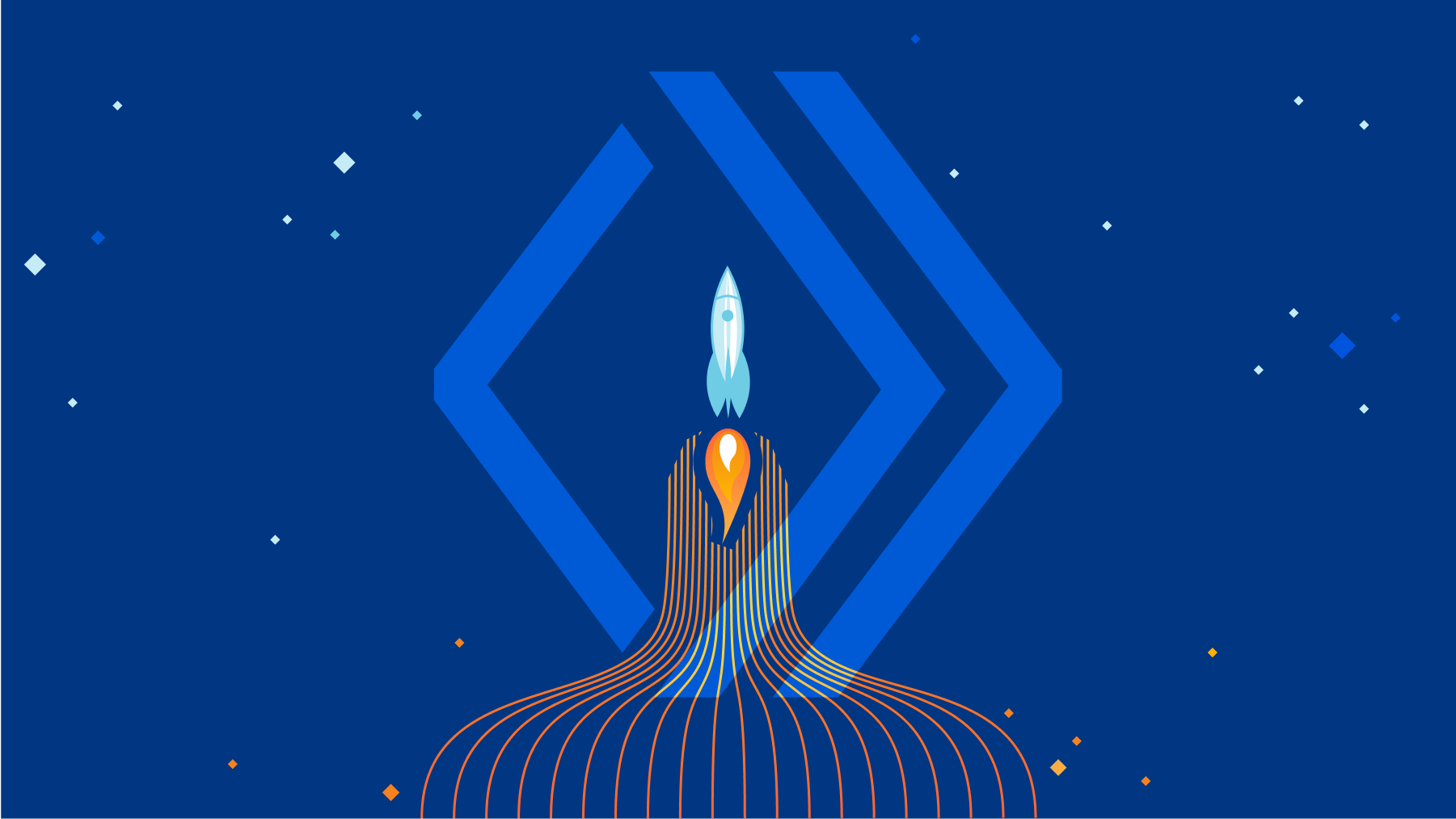
This post is also available in 简体中文, 日本語, 한국어, Deutsch, Français, Español.
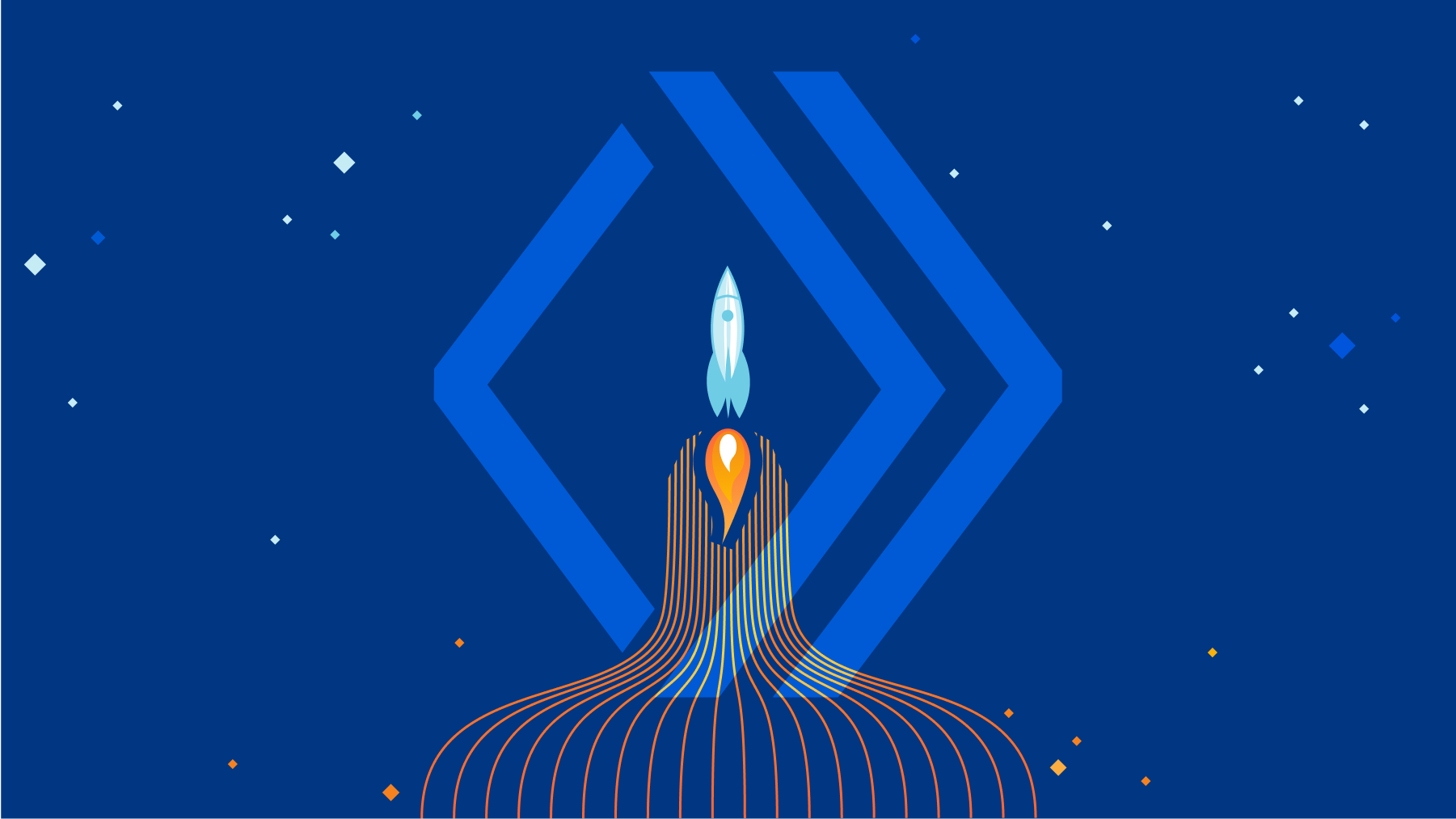
During Birthday Week 2022, we announced a $1.25 billion funding program for startups building on our developer platform, Cloudflare Workers. This was done in partnership with 26 leading VC firms who have been investing in or seeking to invest in Workers-based startups.
Today, we’re excited to reveal the first cohort of Launchpad Startups as well as 14 additional VC partners, bringing the Launchpad to $2 billion in potential funding from 40 VC firms in total.
Who are our new VC partners?
We are excited to welcome 14 additional firms to the Workers Launchpad, which you can find included in the image below. They have worked with hundreds of companies that have grown to become leaders in their areas including Asana, Canva, Figma, Netlify, Vercel, Area 1 Security (which Cloudflare acquired in 2022), and many others. Notably, they also represent a diverse group of investors who support startups across North and South America, Europe, and Asia.

Many of these investors have seen the competitive advantages of building on Workers through their own portfolio companies firsthand and are looking forward to providing the Continue reading